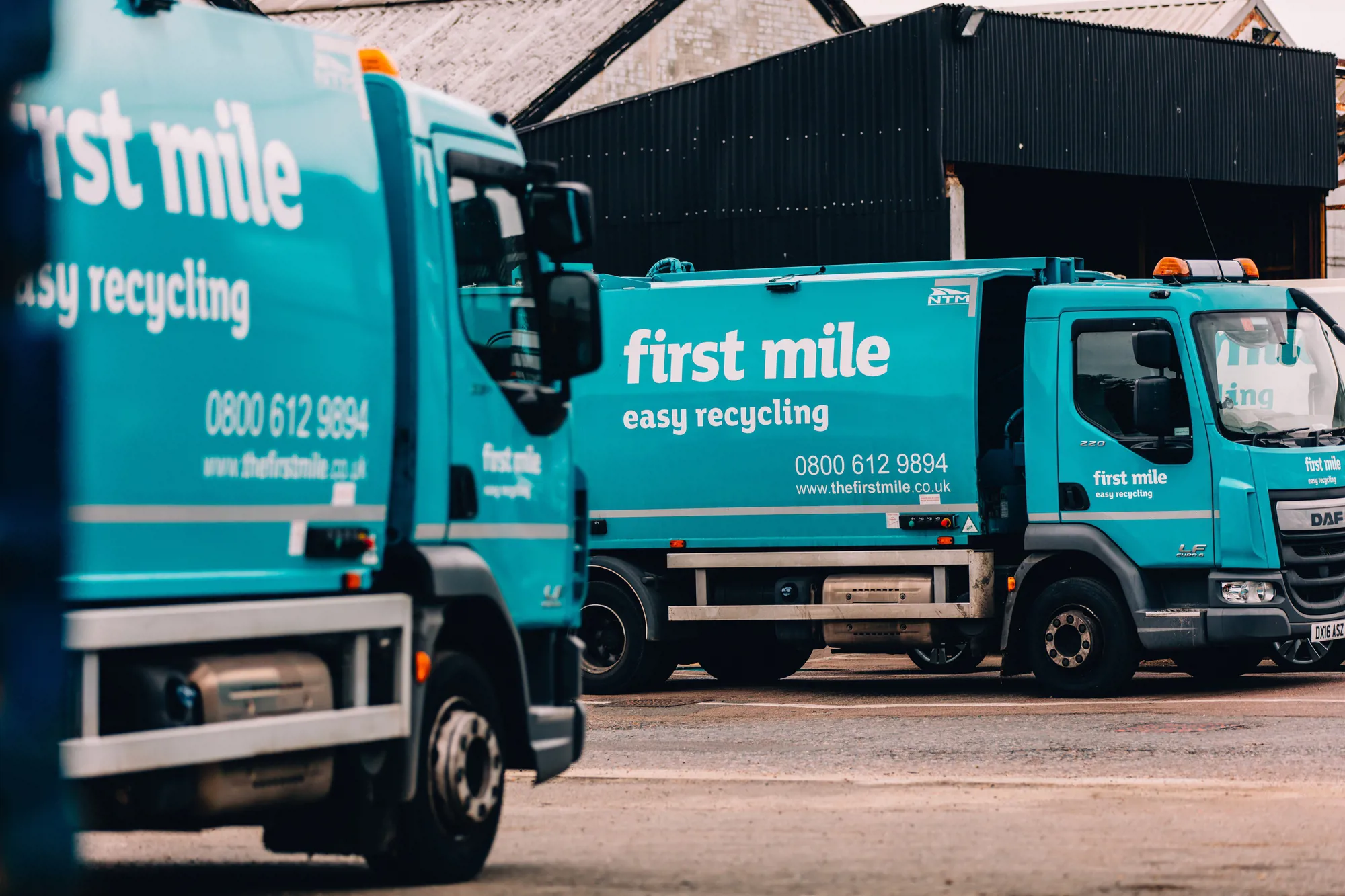We have 60 vehicles in central London collecting recycling round the clock and people often ask why don’t we have low-emission trucks?
The short answer is that we do. We always adhere to the highest EU standards for vehicle emissions and we are currently in the process of moving all vehicles to Euro 6, the latest standard for controlling tail-pipe emissions. Our goal is to operate commercial vehicles with zero-tail pipe emissions - but how far away is this and what’s stopping us and other commercial fleet operators?
Progress is being made for LGVs (Light Goods Vehicles) and this is important because many operate in cities (think Amazon deliveries!). We operate 15 LGVs. A number of existing (Nissan, Renault, Peugeot, Citroen) manufacturers are building LGVs based on plug-in electric cars, but these are lightweight and carry very limited payloads.
First Mile like most fleet operators want LGVs that carry a 1 tonne payload. This is problematic because a 100 mile range battery will add more than half a tonne to the vehicle weight. This almost doubles the cost of the truck and means we can carry less. Although running costs are lower, the vehicle purchase price is prohibitive.
Happily, changes are on the way and I am hoping that the Department for Transport will see sense and increase the gross weight of a light commercial vehicle from 3.5t to 4.25t if it is electric or alternative fuel and so we will win back payload and have a viable vehicle. I am also convinced that battery technology will improve massively in the next decade with performance increasing and costs falling. By 2030, analysts at Bloomberg believe that the average cost of lithium-ion battery pack may have fallen to less than $120 per kilowatt-hour from $350/kWh in 2015.
We are working with BD Autos to undertake commercial scale testing of plug-in electric LGVs in 2017 and I believe there is a bright future for moving to LGVs for urban applications.
The situation is currently less promising for Heavy Goods Vehicles (HGVs) and although many operate in city centres, little progress is being made. Many HGVs operate on similar routes and stop frequently. Think buses, road sweepers, bin lorries and multi-drop delivery vehicles. If we could move these vehicles to electric or alternative fuels it would have a big impact on the quality of city centres.
Some progress is being made with buses, such as Edinburgh, Manchester and Croydon who have installed electric trams. In London TfL have experimented with hydrogen buses and you will have ridden a hybrid bus, which uses electricity to propel itself for the first 20m from bus stops and lights.
For commercial vehicles there has been less progress. Mitsubishi produce a 7.5 tonne diesel/electric hybrid, but it has a low carry weight and still burns diesel for much of its operating time. First Mile has several diesel versions of this vehicle and we looked at the hybrid, but it does not make sense environmentally or commercially. An additional problem for many commercial vehicles is the requirement for auxiliary power to operate cement mixers, tippers, bin lifts and compactors. For a battery powered vehicle auxiliary requirements drain batteries quickly and reduce range (although electricity is an ideal energy source for auxiliary uses because it can deliver a lot of power quickly and in a short burst, which is what is normally needed).
Wrightspeed, a Silicon Valley tech company set-up by Tesla founder Ian Wright is starting to answer some of the issues around powering HGVs. Wrightspeed are building electric drivetrains and power units for HGVs and the battery pack is charged with a small turbo-prop engine (jet engine) that spins a generator to charge the battery while the vehicle is on the road. The engine is small, light, low emission and can run on multiple fuels. I am watching developments of this concept carefully and believe it has huge potential in commercial transport.
For pure urban applications I believe that vehicles will move to plug-in electric power and we may have a future where the Low Emission Zone (LEZ) in London becomes the London Electric Zone. However, to make this happen we will need to see some major improvements in battery cost and performance; we will need new rules on vehicle weights to ensure cargo weights are maintained; and we need new infrastructure to ensure fast charge times and rapid battery changes so commercial vehicles can ‘refuel’ in a few minutes and continue to operate.
Swapping batteries on electric vehicles as an idea has been around for a long time and it needs careful consideration if we are to move to more electric commercial vehicles. I believe it can work because a number of factors can work together. HGV drivers must take regular breaks and typically this is a 15 minute and 30 minute break. This is ample time for a vehicle to pull into a battery-swap station and get ‘refuelled’ twice on a single shift. Clever routing would need to be used and some flexibility offered around driver hours to ensure drivers could take their break while refuelling.
Twenty five percent of UK power is now sourced from renewables, great news, but it means we have a growing energy storage problem. If the sun shines and the wind blows when we have low power demands then renewables produce excess capacity, and we have a shortage on overcast still days. National Grid has just spent £66m on battery storage solutions to store surplus power, which can be instantly released on the grid at peak times. Commercial battery refuelling stations could be combined with the grids need for power storage and so we have an integrated solution for renewables.
Consensus is growing that we need more infrastructure spending to stimulate the economy, building refuelling stations for commercial vehicles could be a great opportunity to green our cities while spending on infrastructure. Fuelling stations do not need to be space intensive and most of the mechanics of battery swapping needs to take place below vehicles so the facilities could be hidden below the surface. What could we do with the £18 billion cost of Hinkley Point?
As the disappointing take-up of the plug-in subsidy for electric cars has shown, we have to solve core issues, such as range anxiety, or for commercial operators load anxiety to ensure we have a future where commercial vehicles move away from diesel. But there is a bright future for alternative fuelled commercial vehicles but we must think in new ways to make commercial vehicles greener.



